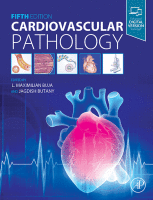Physical Address
304 North Cardinal St.
Dorchester Center, MA 02124

Open full size image Introduction Drug reactions are some of the most frequently encountered adverse complications in the hospital setting. As many as 30% of hospitalized patients may experience such a reaction, and an estimated one to two million Americans…

Open full size image (A) Arrhythmogenic cardiomyopathy: the arrhythmic killer is the fibrofatty replacement of the right ventricle (B) Hypertrophic cardiomyopathy: myocardial disarray is the substrate of the fatal tachyarrhythmia (C) The histology of coronary vasospasm: transient ST segment elevation,…

Open full size image Definition and history Ischemic myocardial injury may be defined simply as those changes that occur in the heart muscle as a result of an imbalance in oxygen and substrate supply and demand. The degree, time course,…

Open full size image Introduction Aortic aneurysms (AAs), either of the abdominal or thoracic aorta, are important causes of morbidity and mortality in developed countries. On the basis of autopsy studies, it has been estimated that 1%–2% of the population…

Open full size image Introduction Vascular diseases encompass a multitude of disorders including inherited conditions, degenerative processes, trauma, inflammatory/autoimmune disorders, and infectious diseases. The disorders may primarily involve any layer of the vessel wall from the adventitia to the media…

Open full size image Introduction to atherosclerosis Atherosclerosis is a leading cause of morbidity and mortality in North America and results in major economic and health burdens across the globe . Atherosclerosis is a chronic vascular disease initially involving the…

Open full size image Abbreviations CHD Congenital Heart Disease; AS Aortic valve Stenosis; ASD Atrial Septal Defect; AVSD AtrioVentricular Septal Defect; CoA Coarctation of the Aorta; DILV Double Inlet Left Ventricle; DOLV Double Outlet Left Ventricle; DORV Double Outlet Right…

Open full size image Overview of heart failure Definition of heart failure and general features of the condition Heart failure (HF) is formally defined as a complex clinical syndrome resulting from any structural and/or functional impairment of ventricular filling or…

Open full size image Central concept figure The cardiovascular system can be impacted by a number of different genetic diseases (inner ring). There are numerous types of alterations to the human genome associated with these diseases (outer ring). The techniques…

Open full size image Open full size image Introduction Longevity is increasing and the population of older adults is expanding . In Europe, the estimated percentage of the elderly population (aged older than 65 years) is 16.1% . In Japan,…